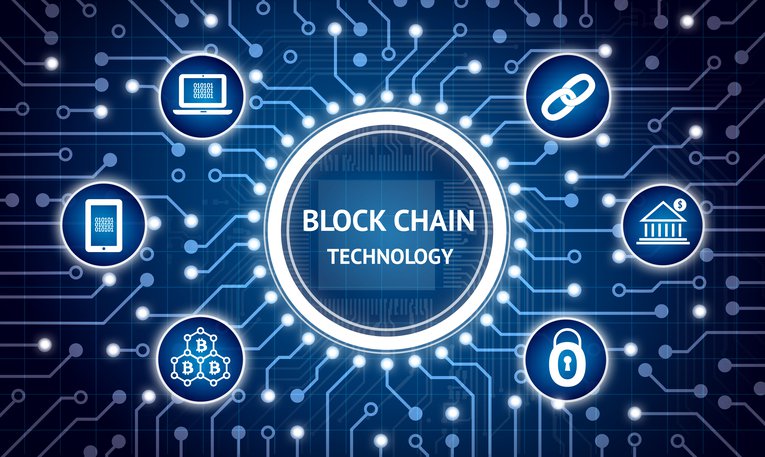How do you communicate complex or technical topics like Blockchain in a media interview simply, easily and in layman terms? This is the type of challenge we address in our media training.
At the heart of good communication lies simplicity. Which is not the same as ‘dumbing down’. Simplicity allows the audience to understand you without fear of them misinterpreting you.
Imagine a technology company spokesperson being asked to explain Blockchain and digital currencies to a non-specialist audience. Often their first instinct (as a techy person) is to explain in detail the way the technology works – which is fearsomely complicated.
Journalists are usually focused on how issues, products and ideas affect people. So the essence of an interview question about Blockchain is ‘what does it do and how does it benefit people’? So how might we explain that?
We could communicate right at the start of our answer that “Blockchain is basically the technology that allows people to trust and use digital currencies like Bitcoin”.
Now that the audience knows what Blockchain does, we need to make it relevant to them. This audience may never use nor invest in a cryptocurrency and may neither know nor care that there are more cryptocurrencies out there than Bitcoin. But they want a shorthand way of understanding it. Maybe to get them through 60 seconds of conversation at the pub. So we need to use language and concepts which are familiar to them.
So maybe we then say “When you use pounds or dollars or Euros, you trust them because you trust governments and their central banks to maintain the value of the currency and to keep the system honest. If I buy something from you on eBay for ten pounds, I promise to pay ten real pounds for it and put ten real pounds in your bank account. My bank verifies that I have the money and that I have put it into your account. Your bank verifies that it has received ten real pounds. You don’t need to trust me. You can trust the banks.”
Our audience is now connected to what happens in an everyday financial transaction and now has a context for understanding how digital currencies differ and Blockchain facilitates them.
So perhaps we can now go on to say:
“A currency like pounds or dollars effectively has a single, central database overseen by government and banks that records and totals up economic transactions. It means that everybody knows how much money is in circulation, its value and who owns it.
But digital or so called cryptocurrencies like Bitcoin, aren’t organised by a government or trusted third party and they don’t even have any physical form like pound notes and coins. So how can you be sure that if you want to get and use Bitcoin, that it has any true value or that you really own what you buy with it?
Well Blockchain is the technology that provides that trust in cryptocurrency transactions. Blockchain is not one centralized database owned by a single individual or organisation. It is owned by everyone who has a copy of it (even you can dowload it if you want to!) and the copies are exactly the same. And it continuously updates the digital record everytime there is a transaction as all the copies verify it. No-one can dishonestly tamper with it because their record won’t match everybody else’s and would be rejected.
When you use Bitcoin to make a digital transaction, Blockchain essentially checks with all the databases that the person paying really has the funds and so can own the item they are buying. And it cuts out the middle-man of the bank meaning the transaction is faster and cheaper.”
And why the name ‘Blockchain’? Well everytime a new group of transactions are recorded, the data file forms a ‘block’ that is added to the linear historical record of transactions. So you have a chain of blocks. Thus – Blockchain.”
Not saying that this is the perfect way to describe Blockchain and cryptocurrencies but remember, media interviews are a communication exercise. Complexity, jargon and abstract detail obscure; as a media spokesperson you want to illuminate.
So to communicate around a complex topic to a non-specialist audience, find relevant, everyday examples and analogies that provide a context for what you are talking about. Avoid jargon and concepts that need to be mentally processed. Explain concisely and simply why it should matter to real people in their busy lives. Only then explain ‘how it works’.
[As a sidebar note of interest, and for those communicating about Blockchain beyond cryptocurrencies or about other complex topics, the key question for audiences is ‘what can I/ we use it for?’ – or to put it simply, ‘what’s in it for me?’. In the case of Blockchain, it is potentially going to disrupt alot of processes. Since we can now verify ownership of anything digital without a middleman, then what middlemen can be dispensed with? Beyond verifying a Bitcoin, we could verify votes or the energy produced by the solar panels panels on your roof. Dropbox may not be long for this world if instead of that company holding my data on its server, it can instead be split up into millions of chunks and stored across millions of computers.]

